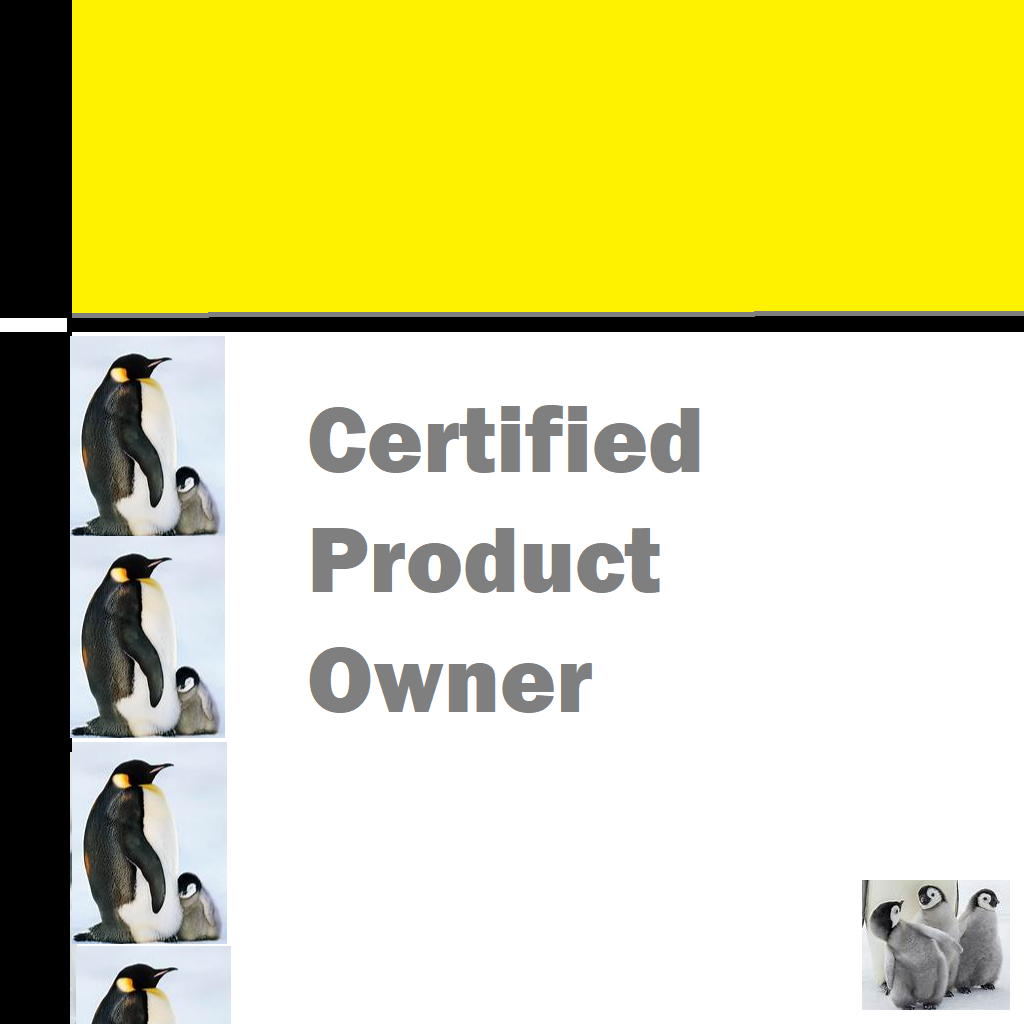Reference To Software Development
Customer is the King! Period! and Employee is the person who helps us deliver the value to the king. Today, as the competition rises corporates are more than ever under pressure to produce and supply value. In the competitive world of software development, success is often measured not just by the technical output but by the satisfaction levels of both customers and employees. Customer Satisfaction (CSAT) and Employee Satisfaction (ESAT) are crucial indicators of a project’s overall health and long-term viability. A project that excels in these areas is more likely to be delivered on time, within budget, and with fewer issues, fostering a positive work environment and cultivating lasting client relationships.
As a project manager, balancing these two metrics can be challenging. On one hand, delivering high-quality software on time and within scope is essential to meeting customer expectations. On the other hand, achieving this goal without overburdening your development team, and ensuring their job satisfaction, is equally important. Neglecting either can lead to project delays, increased turnover, and ultimately, a decline in the quality of work.
This article explores the various strategies and best practices for maintaining high CSAT and ESAT in software development projects. We’ll delve into the roles and responsibilities of a project manager, the importance of effective communication, and how to create a work environment that fosters both customer and employee satisfaction. We’ll also look at the potential challenges and how to overcome them, ensuring that your software development projects not only meet but exceed expectations.
Table of Contents
How to Maintain CSAT and ESAT as a Project Manager
Understanding CSAT and ESAT in Software Development
The Role of a Project Manager in Balancing CSAT and ESAT.
1. Clear and Consistent Communication.
2. Setting Realistic Expectations.
4. Fostering a Positive Work Environment
5. Managing Conflicts and Issues.
6. Leveraging Technology and Tools.
Overcoming Challenges in Balancing CSAT and ESAT.
Measuring and Monitoring CSAT and ESAT.
Long-Term Strategies for Maintaining CSAT and ESAT.
In an industry where change is constant and the demand for innovation is high, maintaining CSAT and ESAT is not just a nice-to-have but a necessity. By understanding the key drivers behind these metrics and implementing thoughtful strategies, project managers can lead their teams to success, delivering value to customers while keeping their teams motivated and engaged. Let’s explore how this can be achieved in a structured and sustainable way.
Understanding CSAT and ESAT in Software Development
Before diving into strategies, it’s essential to understand what CSAT and ESAT mean within the context of software development.
What is CSAT?
Customer Satisfaction (CSAT) is a metric used to measure the level of satisfaction a customer has with a product or service. In software development, this typically pertains to the client’s satisfaction with the final product, the process of development, and the ongoing support they receive. High CSAT is indicative of a product that meets or exceeds customer expectations, leading to customer loyalty and positive referrals.
What is ESAT?
Employee Satisfaction (ESAT) measures how satisfied employees are with their job, the work environment, and the company culture. In software development, a high ESAT means that developers and other team members are motivated, feel valued, and are likely to remain with the company. This is crucial because high employee turnover can disrupt projects, reduce morale, and increase costs.

The Role of a Project Manager in Balancing CSAT and ESAT
As a project manager, you are the linchpin between the development team and the client. Your role is multifaceted, requiring a deep understanding of both the technical and human aspects of software development. Here’s how you can balance CSAT and ESAT:
1. Clear and Consistent Communication
Effective communication is the foundation of both customer and employee satisfaction. As a project manager, you need to ensure that there is clear and consistent communication between all stakeholders.
- With Customers: Regular updates on project progress, managing expectations, and promptly addressing concerns are vital. Use tools like project management software to keep the client in the loop and provide them with transparency into the development process. Ensure that their feedback is not only heard but also incorporated into the project.
- With the Development Team: Keeping your team informed about project goals, changes, and deadlines helps them stay aligned and focused. Foster an environment where team members feel comfortable voicing their concerns and suggestions. Regular check-ins, one-on-one meetings, and using collaborative tools can help in maintaining open lines of communication.
2. Setting Realistic Expectations
One of the biggest challenges in software development is managing expectations. Unrealistic expectations can lead to project overruns, burnout among developers, and ultimately, dissatisfied customers.

- For Customers: Set clear, achievable goals from the outset. Break down the project into manageable phases or milestones, and make sure the client understands the scope and limitations of what can be delivered within each phase. This not only helps in managing customer expectations but also provides opportunities to demonstrate progress and get feedback, which can be crucial for maintaining CSAT.
- For the Team: Ensure that the project timelines, workloads, and goals are realistic and achievable. Overcommitting can lead to burnout, low morale, and high employee turnover. Involve your team in the planning process to get their input on what’s feasible, and be prepared to push back on client demands if they risk overwhelming your team.
3. Agile Project Management
The Agile methodology is particularly effective in balancing CSAT and ESAT in software development. By focusing on iterative development, continuous feedback, and flexibility, Agile allows project managers to adjust priorities and resources based on both customer feedback and the team’s capacity.
- For Customers: Agile allows for regular interaction with the client, which can help in refining the product to better meet their needs. This iterative approach means that changes can be made throughout the development process, leading to higher customer satisfaction as the final product is more likely to meet their expectations.
- For the Team: Agile fosters a collaborative and supportive environment. Regular stand-up meetings, sprint reviews, and retrospectives give the team a platform to voice concerns, share successes, and continuously improve processes. This not only boosts morale but also keeps the team engaged and motivated.
4. Fostering a Positive Work Environment
A positive work environment is key to maintaining high ESAT. As a project manager, you have a significant influence over the team’s morale and job satisfaction.
- Encourage Work-Life Balance: One of the leading causes of low ESAT in software development is burnout. Encourage your team to take breaks, use their vacation time, and maintain a healthy work-life balance. Avoid the temptation to impose unrealistic deadlines that could lead to long hours and stress.
- Provide Opportunities for Growth: Developers thrive in environments where they can learn and grow. Provide opportunities for professional development, such as training sessions, conferences, or the chance to work on innovative projects. A team that feels they are advancing in their careers is more likely to be satisfied and motivated.

- Recognize and Reward Achievements: Regular recognition of your team’s hard work can significantly boost morale. Whether it’s through formal rewards programs, shout-outs during meetings, or simply a thank-you note, acknowledging your team’s efforts can go a long way in maintaining high ESAT.
5. Managing Conflicts and Issues
Conflicts are inevitable in any project, but how they are managed can significantly impact both CSAT and ESAT.
- With Customers: When conflicts arise, address them head-on with transparency and a problem-solving mindset. Avoid placing blame and focus on finding solutions that are acceptable to all parties. Keeping the customer informed and involved in the resolution process can help maintain trust and satisfaction.
- Within the Team: Internal conflicts can quickly derail a project if not addressed promptly. Foster a culture of open communication where issues can be discussed and resolved constructively. As a project manager, be approachable and fair in mediating disputes, ensuring that all team members feel heard and valued.
6. Leveraging Technology and Tools
The right tools can make a significant difference in managing CSAT and ESAT.
- Project Management Tools: Use tools like Jira, Trello, or Asana to keep track of tasks, deadlines, and progress. These tools not only help in keeping the project on track but also provide transparency for both the customer and the team.
- Communication Tools: Tools like Slack, Microsoft Teams, or Zoom facilitate communication and collaboration, especially in remote or distributed teams. They help in keeping everyone connected and informed, reducing the likelihood of misunderstandings or miscommunications.
- Feedback Tools: Use tools like SurveyMonkey or Officevibe to regularly gather feedback from both customers and team members. This feedback can provide valuable insights into areas of improvement and help in making informed decisions to enhance CSAT and ESAT.
Overcoming Challenges in Balancing CSAT and ESAT
Maintaining high levels of CSAT and ESAT is not without its challenges. Here are some common challenges and how to overcome them:
1. Scope Creep
Scope creep is one of the most common challenges in software development. It refers to the gradual expansion of a project’s scope beyond its original objectives, often leading to project delays, increased costs, and team burnout.
- Solution: Clearly define the project scope at the outset and communicate it to both the customer and the team. Use change management processes to handle any requests for scope changes, ensuring that all parties understand the impact on timelines and resources.
2. Resource Constraints
Limited resources, whether in terms of time, budget, or manpower, can make it difficult to maintain high levels of CSAT and ESAT.
- Solution: Prioritize tasks and allocate resources based on project needs and team capacity. Be realistic about what can be achieved with the available resources and communicate any constraints to the customer. Where possible, consider bringing in additional resources or outsourcing specific tasks to alleviate the burden on your team.
3. Rapidly Changing Requirements
In the fast-paced world of software development, requirements can change quickly, making it challenging to keep both customers and employees satisfied.
- Solution: Embrace flexibility and adaptability by adopting Agile methodologies. Regularly reassess project priorities and be prepared to pivot as needed. Keep the customer informed about the impact of changing requirements on the project timeline and scope, and involve the team in discussions about how to adapt to these changes.

4. Remote and Distributed Teams
The rise of remote and distributed teams has introduced new challenges in maintaining ESAT, particularly around communication, collaboration, and team cohesion.
- Solution: Invest in tools and practices that facilitate communication and collaboration in remote environments. Regular virtual meetings, team-building activities, and clear communication channels can help maintain a sense of connection and belonging among team members. As a project manager, be mindful of time zone differences and ensure that workloads are distributed fairly.
Measuring and Monitoring CSAT and ESAT
Maintaining high levels of CSAT and ESAT requires ongoing measurement and monitoring. Here’s how to do it effectively:
1. Regular Surveys and Feedback
Regularly gather feedback from both customers and employees to gauge their satisfaction levels. Use this feedback to identify areas of improvement and take proactive steps to address any issues.
- CSAT Surveys: Conduct surveys at key milestones or at the end of each project phase to assess customer satisfaction. Ask specific questions about their experience with the product, the development process, and communication with the team.
- ESAT Surveys: Use tools like Officevibe or SurveyMonkey to regularly check in with your team. Ask about their workload, job satisfaction, work-life balance, and any challenges they may be facing. This feedback can provide valuable insights into how to improve the work environment and keep your team motivated.
2. Key Performance Indicators (KPIs)
Use KPIs to track the health of your project and the satisfaction levels of both customers and employees.
- For CSAT: Track metrics like customer retention, repeat business, and Net Promoter Score (NPS). These indicators can provide insights into how satisfied your customers are and how likely they are to recommend your services to others.
- For ESAT: Monitor metrics like employee turnover, absenteeism, and productivity. High turnover or absenteeism can be indicative of low job satisfaction, while high productivity and low turnover typically indicate a satisfied and engaged team.
3. Regular Check-Ins and Reviews
Regularly review the status of your project and the satisfaction levels of both customers and employees. This can be done through regular check-ins, one-on-one meetings, and project reviews.
- With Customers: Schedule regular meetings to review project progress, discuss any concerns, and gather feedback. Use these meetings to address any issues before they become major problems and to reinforce the customer’s confidence in the project.
- With the Team: Hold regular one-on-one meetings with your team members to discuss their workload, challenges, and career goals. Use these meetings to provide support, offer guidance, and recognize their achievements.
Long-Term Strategies for Maintaining CSAT and ESAT
Maintaining high levels of CSAT and ESAT is an ongoing process that requires long-term strategies. Here are some tips for ensuring sustained success:
1. Foster a Culture of Continuous Improvement
Encourage a culture of continuous improvement within your team. Regularly review your processes, gather feedback, and look for ways to improve both the product and the work environment.
- For Customers: Regularly seek feedback on how to improve the customer experience. This could include improving communication, offering additional support, or refining the development process to better meet their needs.
- For the Team: Provide opportunities for professional development and encourage your team to learn new skills and technologies. Regularly review your team’s performance and look for ways to improve processes and workflows to increase efficiency and job satisfaction.
2. Build Strong Relationships
Building strong relationships with both customers and employees is key to maintaining high levels of CSAT and ESAT.
- With Customers: Invest time in building a strong relationship with your customers. Understand their business, their goals, and their challenges. This will not only help you deliver a better product but also build trust and loyalty, leading to higher CSAT.
- With the Team: Build strong relationships with your team members by showing genuine interest in their well-being and career development. Be approachable, supportive, and fair. This will help create a positive work environment and increase ESAT.
3. Stay Adaptable and Agile
The software development industry is constantly evolving, with new technologies, methodologies, and customer expectations emerging regularly. Staying adaptable and agile is key to maintaining high levels of CSAT and ESAT in this dynamic environment.
- For Customers: Stay ahead of industry trends and be proactive in suggesting new solutions or approaches that could benefit your customers. This will not only help you stay competitive but also demonstrate your commitment to delivering value, leading to higher CSAT.
- For the Team: Encourage your team to stay current with industry trends and provide opportunities for learning and development. This will help keep your team engaged, motivated, and satisfied, leading to higher ESAT.
Conclusion
Balancing CSAT and ESAT in software development is a complex but essential task for project managers. By focusing on clear communication, setting realistic expectations, adopting Agile methodologies, fostering a positive work environment, and regularly measuring satisfaction levels, you can achieve high levels of both customer and employee satisfaction. Overcoming challenges such as scope creep, resource constraints, and rapidly changing requirements requires a proactive and adaptable approach. By implementing long-term strategies focused on continuous improvement, relationship building, and adaptability, you can ensure sustained success in maintaining CSAT and ESAT. Ultimately, the key to success lies in understanding the needs and expectations of both customers and employees and creating a work environment that supports the achievement of these goals.
Curated for you:






Thank you for some other informative website. Where else may just I get that type of info written in such a perfect means? I have a venture that I am just now operating on, and I have been at the glance out for such information.
Awesome! Its genuinely remarkable post, I have got much clear idea regarding from this post .
Tech to Force I truly appreciate your technique of writing a blog. I added it to my bookmark site list and will
Awesome! Its genuinely remarkable post, I have got much clear idea regarding from this post -Nutra Gears
I appreciate you sharing this blog post. Thanks Again. Cool.